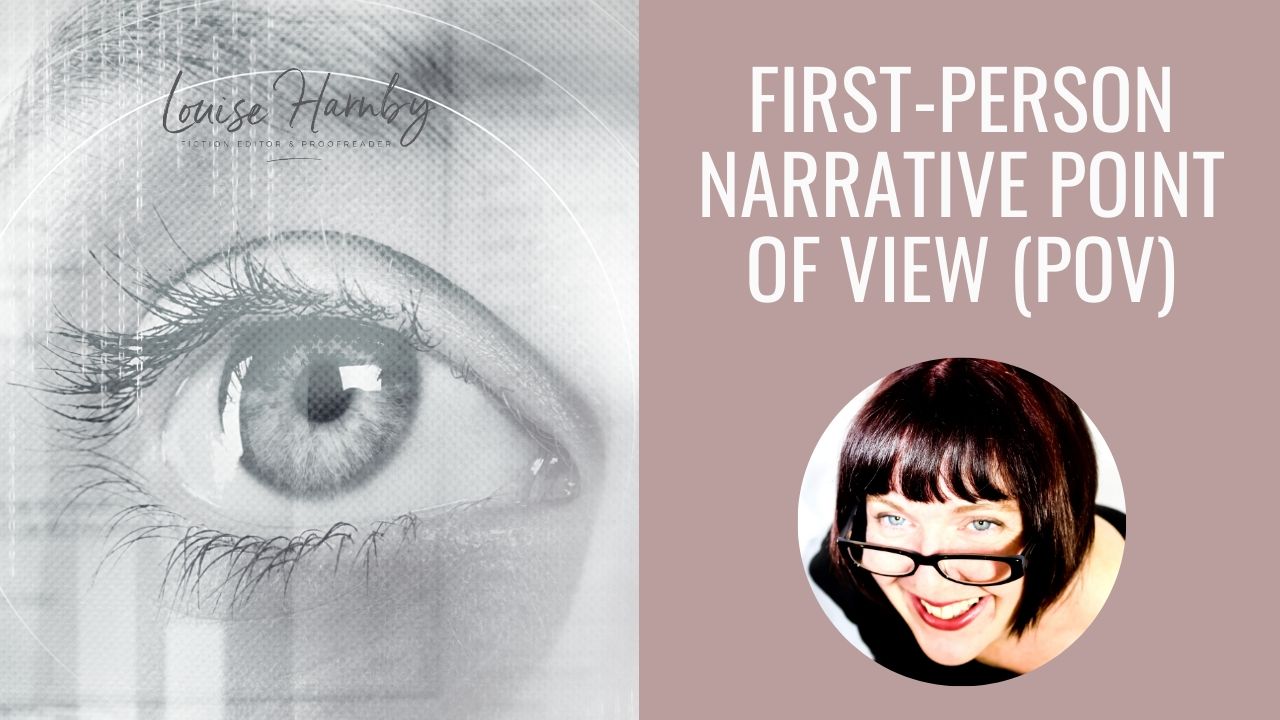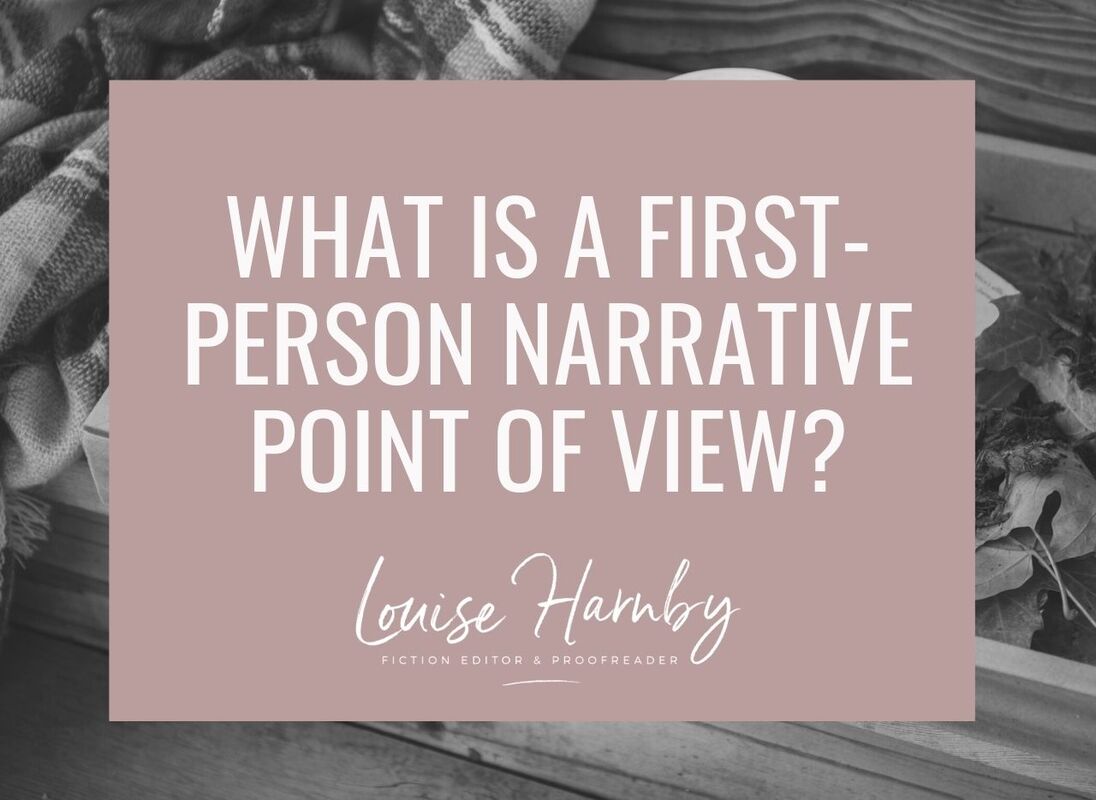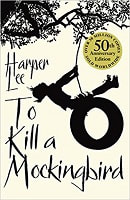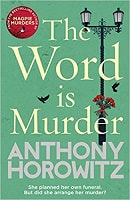|
If you’re not sure what a first-person narrative point of view is, or how to use it effectively in your fiction writing, this post is for you.
What is narrative point of view?
Point of view (POV) describes whose head we’re in when we read a book ... from whose perspective we discover what’s going on – and the smells, sounds, sights and emotions involved. There can be multiple viewpoints in a book, not all of which have to belong to a single character. And to complicate things, editors’ and authors’ opinions differ as to which approach works best, and what jars and why. POV can be tricky and my aim is to keep the guidance as straightforward as possible, not because I think you should only do it this way or that way, but because most people (myself included) handle complexity best when they start with the foundations and build up and outwards. Why should you bother nailing POV? Pro editors and experienced writers agree on one thing: it’s worth the beginner author’s time to understand POV so that they can make decisions about which to use, where, and why. Consider the following:
Point of view: What are the options?
There are multiple ways in which to narrate a novel. Some are more popular than others, and some easier to master. What you choose will shape not only the story you tell but also your readers’ understanding of it. The options are as follows:
First-person POV First-person narrative POVs are the most intimate, the most immediate, but they’re less flexible. The pronouns used are ‘I’ and ‘we’. The reader is privy to an individual character’s thoughts, emotions and experiences, all told through a distinctive voice. We can only see, hear, smell and feel what the character sees, hears, smells and feels. We are compelled to move through the story knowing only what they know, and at their pace. However, used throughout an entire novel, from on character only, it can be problematic for the following reasons:
Example: Not relying on ‘I’ In To Kill a Mockingbird (p. 5), Harper Lee keeps ‘I’ to a minimum and yet the prose oozes with first person. Note in particular how the voice is rich and distinct, rather than the more neutral tone we’d expect from third-person objective narration.
Because Lee doesn’t append ‘I’ plus a verb to much of the prose, we are given a shown narrative that we can experience rather than being told how the narrator experienced the world being described. Compare it with the ‘I’-heavy made-up example below and consider how the narrator’s told experience keeps the reader at a distance.
I placed my hand on the rusty handle and tugged, but the old oak door refused to give way to me. I heard a rustling sound behind me and turned my head. I spotted movement in the inky shadows and felt the skin on the back of my neck prickle with terror as I realized I wasn’t alone.
Let’s rewrite this with a less invasive first-person narration in which the reader can experience the action as it unfolds. The handle was rusty against my palms as I tugged but the old oak door refused to give. A rustling came from behind and I turned. A shape flitted in the inky shadows and the skin on the back of my neck prickled. I wasn’t alone. Example: Sustaining interest with other interpretations In The Word is Murder (p. 208), author Anthony Horowitz is one of the characters! The viewpoint is first person (his). The author is like a floating camera; we see the protagonist – the detective (Hawthorne) who solves the crime – through Horowitz’s eyes as he accompanies him to interviews with suspects and on visits to crime scenes. The author-character offers his own theories, even pursues his own lines of investigation, and interjects with stories about his life and career. This adds interest but, ultimately, it’s the detective who grounds the crime story, brings reliability to the narrative, and drives the novel forward; it’s through him that we access the procedural elements and the answer to whodunnit. Here’s an excerpt:
Recommendation First-person narratives introduce depth and explain motivations but can be difficult to sustain if not sufficiently interesting and there’s too much told narrative. Watch out for filter words if you think you’re over-telling. Consider whether your whole novel needs to be in first person. Perhaps limiting this approach to specific characters in dedicated chapters would be more effective. If you decide to stick with first person throughout, think about voice and how your viewpoint character (and therefore the reader) will discover the how, when and why of the story at an engaging pace. And, finally, if you’re basing your whole novel in the first person, be cautious about using the present tense throughout. The past might give you more flexibility, particularly if you’re writing action-heavy scenes where, in reality, the character wouldn’t have time to give much thought to the consequences and motivations of their behaviour. Cited sources and related reading
Louise Harnby is a line editor, copyeditor and proofreader who specializes in working with crime, mystery, suspense and thriller writers.
She is an Advanced Professional Member of the Chartered Institute of Editing and Proofreading (CIEP), a member of ACES, a Partner Member of The Alliance of Independent Authors (ALLi), and co-hosts The Editing Podcast. Visit her business website at Louise Harnby | Fiction Editor & Proofreader, say hello on Twitter at @LouiseHarnby, connect via Facebook and LinkedIn, and check out her books and courses.
5 Comments
12/2/2019 08:37:02 pm
Louise: this post is so helpful. I’ve written a 100,000 word thriller and I needed help with POV, because I would pick up a Baldacci novel in the airport and sure enough, the book would have plenty of 3rd person objective mixed with limited 3rd- something I been told to NEVER do. Well your post helps me out greatly. If Baldacci can do it, so can I. Now, 3rd person DEEP might not play well with objective 3rd, unless the objective 3rd is first and sets the description. Question if you don’t mind: could a writer use deep POV third to convey some deep thoughts, and then pull back in the next paragraph and use 3rd objective for a quick description of the setting?
Reply
Louise Harnby
12/2/2019 09:59:22 pm
Hi, Tom!
Reply
Paul Carroll
24/9/2020 10:40:35 am
Hi, I’m trying to write a novel, but I’m stuck. I’m telling the story from 1st person. So it’s his story, telling it from his perspective and he’s in the story. I’d like to write a few scenes where he isn’t in them, is that possible? Many thanks
Reply
Louise Harnby
24/9/2020 11:29:23 am
You can have multiple viewpoints in a novel, though they need to be distinct sections or chapters. I'd also advise ensuring that they're positioned appropriately throughout the book so that the reader comes to expect them as regular but purposeful interjections.
Reply
Sherri
14/1/2024 10:50:00 pm
Hello Ms. Harnby,
Reply
Leave a Reply. |
BLOG ALERTSIf you'd like me to email you when a new blog post is available, sign up for blog alerts!
TESTIMONIALSDare Rogers'Louise uses her expertise to hone a story until it's razor sharp, while still allowing the author’s voice to remain dominant.'Jeff Carson'I wholeheartedly recommend her services ... Just don’t hire her when I need her.'J B Turner'Sincere thanks for a beautiful and elegant piece of work. First class.'Ayshe Gemedzhy'What makes her stand out and shine is her ability to immerse herself in your story.'Salt Publishing'A million thanks – your mark-up is perfect, as always.'CATEGORIES
All
ARCHIVES
July 2024
|
|
|
|



















 RSS Feed
RSS Feed





